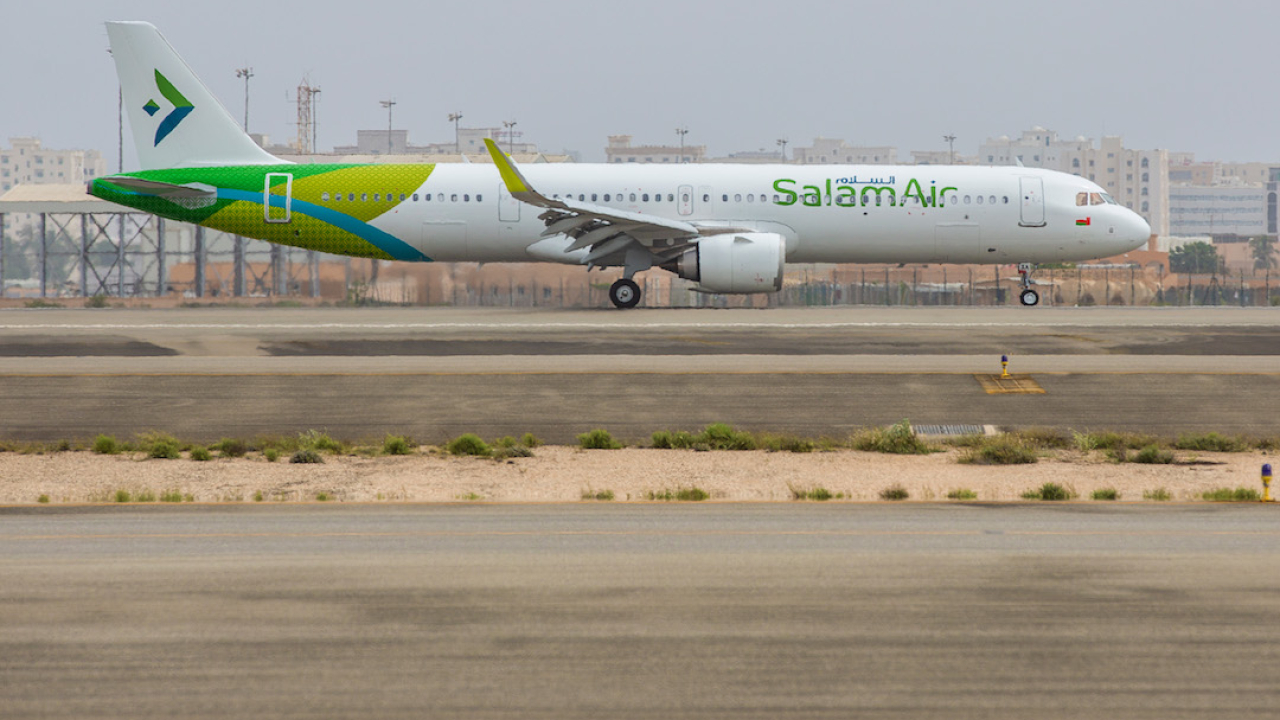SalamAir sharpens its cutting edge
A major change of direction is under way at Omani carrier SalamAir, as it seeks to restore its low-cost credentials.

SalamAir plans to increase its fleet of Airbus A321neos in the coming years. IMAGE: SalamAir
A new CEO is in place and a renewed focus on the principles behind a successful low-cost carrier (LCC) is under way at SalamAir, as it slims down and shapes up for the future.
The Muscat-based airline is in the process of shedding several components that had led it into unfamiliar territory.
The airline has been built around the Airbus A320 family, but the previous management bought widebody Airbus A330-300s, small narrowbody Embraer E195 E2s and a dedicated freighter.
“Name an LCC that has A330s,” commented new CEO Adrian Hamilton-Manns, who took over the reins in early summer.
The move away from an LCC model had led to ticket prices that were in some cases even higher than those of the country’s full-service carrier, Oman Air, he said. This had led Oman’s civil aviation regulator to suggest it would tender for a new LCC, which Hamilton-Manns described as “a veiled threat” towards SalamAir – a warning that it was not fulfilling its original function.
As a result, the deal for four leased A330s has been cancelled, delivery of the Embraers has been deferred and the single A321 freighter has been grounded.
Additionally, a wheels and brakes workshop is being phased out and the company’s whole engineering function is being reviewed to work out what is actually required to support SalamAir’s fleet.
“It’s all about cutting off all the areas that distract us and lose us money, areas an LCC shouldn’t have,” said Hamilton-Manns.
SalamAir is owned 50 per cent by the Omani government, through various institutions, and 50 per cent by private investors. “They want to grow the airline and put it back into the correct position as a low-cost carrier (LCC).”
The company has a fleet of 13 aircraft – six Airbus A320neo and seven A321neo – and should receive two more A321neo in 2025. At present, the company’s business plan to grow to 25 aircraft is being evaluated. The aim is to increase the fleet by two or three aircraft a year from 2026-2028.
As at most airlines, the Airbuses’ Pratt & Whitney GTF power plants have proved problematical. The Embraers that have now been deferred use a different model of the same engine family and this was a reason for postponing their arrival. “We’re not willing to take another piece of equipment that puts more pressure on us,” the CEO said. The airline has not yet committed to a date to accept the small narrowbodies.
Indeed, Embraer Commercial Aircraft’s president and CEO, Arjen Meijer, said in London in September that while the engine was now performing very well in benign environments, it was recommending to clients in harsh or dusty climates that they should postpone deliveries until Pratt & Whitney signed off on a new combustor – expected in late 2026 or early 2027.
If the Embraers eventually enter service, they are likely to be used mainly on domestic routes, including desert strips that are too small for the A320neos.
In terms of future route development, the Indian sub-continent is an obvious target. The airline already operates to seven destinations in India, six in Pakistan and two in Bangladesh, and expects to add to that list: “There’s almost unending demand for travel to and from the sub-continent.”
SalamAir is also looking closely at Africa, with the intention of launching five new routes imminently: “Kigali [in Rwanda] and the central part of East Africa keep showing up on our radar as heat pockets of opportunity,” he said.
There are also plans to increase co-operation with Oman Air. Relations between the two carriers had become fractious under the previous managements of both airlines, but Hamilton-Manns, a New Zealander, has good relations with the flag-carrier’s new Australian CEO, Con Korfiatis. The aim is to have a co-operation agreement similar to that between Emirates and Flydubai.
Stay up to date
Subscribe to the free Times Aerospace newsletter and receive the latest content every week. We'll never share your email address.


